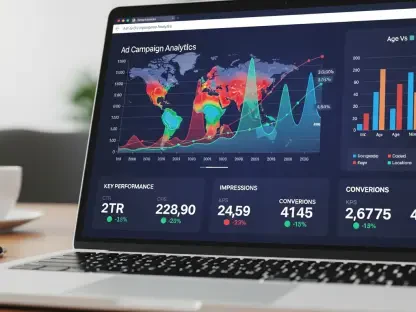Marketers around the world are becoming more and more aware of the fact that a future-oriented digital marketing strategy is now essential for any brand. As the COVID-19 pandemic disrupted and reshaped most industries, some brands managed to adapt to the “new normal” better than others, especially by boosting online sales. By using new technologies and digital marketing strategies, these brands managed not only to communicate effectively with their existing audiences but also to attract new leads and new customers. Thriving during a global healthcare crisis is by no means an easy task, but the good news is that future-oriented digital marketing strategies used during the pandemic can now inspire coming actions, too.
As marketers look forward to the post-pandemic future, they strive to recognize those marketing strategies that can be implemented today for better prospects. While some of these strategies are based on the way consumer behavior has changed during the pandemic, others rely on new technologies that will undoubtedly change the future. Let’s explore three future-oriented digital marketing strategies that can help marketers in the US and abroad boost both sales and profits.
Returning to in-store shopping
E-commerce sales increased during the COVID-19 pandemic, but with brick-and-mortar stores now opened for business, a good digital marketing strategy should be adapted to both online and in-store shopping. According to Capgemini’s new study, consumer preference for in-store shopping now exceeds the levels seen before the pandemic, but online sales also remain strong. When it comes to returning to traditional shopping, age seems to play an important role, and that is also extremely important when designing a future-oriented digital marketing strategy. While those aged 25-40 have the strongest preference for online interactions (51%), shoppers aged 58-67 have only a limited preference for online purchases (24%).
Marketing specialists already know that a valuable digital marketing strategy is one that not only boosts online sales but also in-store shopping. By using demographics and other data, campaigns can now target customers according to their own shopping preferences.
Using data analytics to boost sales
Using data analytics essentially means examining data sets to draw valuable information about consumer behavior, new trends, and untapped opportunities for a certain brand, product, or service. Data analytics can be used to understand which people are most likely to become customers, what are the best ways to target those people, how to deliver the right message at the right time, and even how to increase customer lifetime value. However, marketers should be careful when using this data, because recent studies also show that many Americans are now concerned about the ways companies use their personal information.
As many as 79% of Americans now say they are concerned about the way their data is being used by companies, while 64% are also worried about how the government uses their information. With many people now saying data collection has more risks than benefits, marketers should avoid excessive use and stay away from spam and other unsolicited marketing strategies.
Developing interactive content that engages customers
Dynamic materials like calculators, quizzes, ebooks, or animated infographics are by no means new, but that doesn’t mean interactive content is not a future-oriented digital marketing strategy. With companies like Facebook, now Meta, upping their game to include virtual reality (VR) on their platforms, one thing is certain: companies everywhere are doing their best to engage their audience. Marketers should take note and use interactive content in email marketing campaigns, landing pages, ads, and social media posts.
The COVID-19 pandemic has already proved that brands that connect with their customers online, provide useful information, and engage their clients are more likely to be remembered. Interactive content is probably the best way to do that — and it also comes with the advantage of being fun.
Although the recent healthcare crisis has disrupted the daily lives of people in the US and abroad, and it has also reshaped shopping habits, it came with valuable lessons that may help marketers build better, more reliable strategies. Adapting new campaigns to both in-store and online shopping, using data analytics to boost sales, and creating interactive content that engages customers are just some ways brands will remain relevant to their customers. These future-oriented digital marketing strategies may also prove to be essential when it comes to distinguishing a brand from its competitors.









